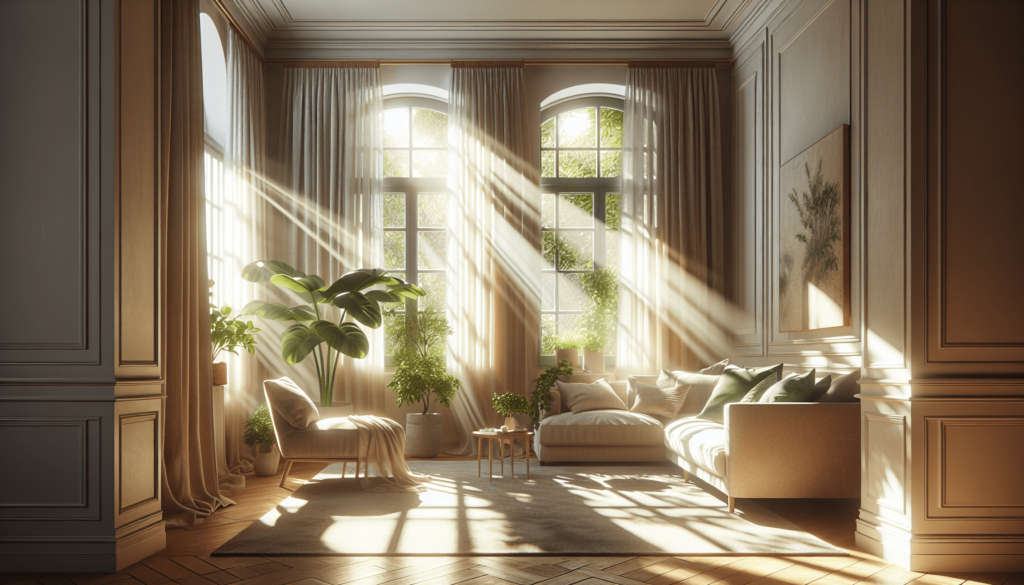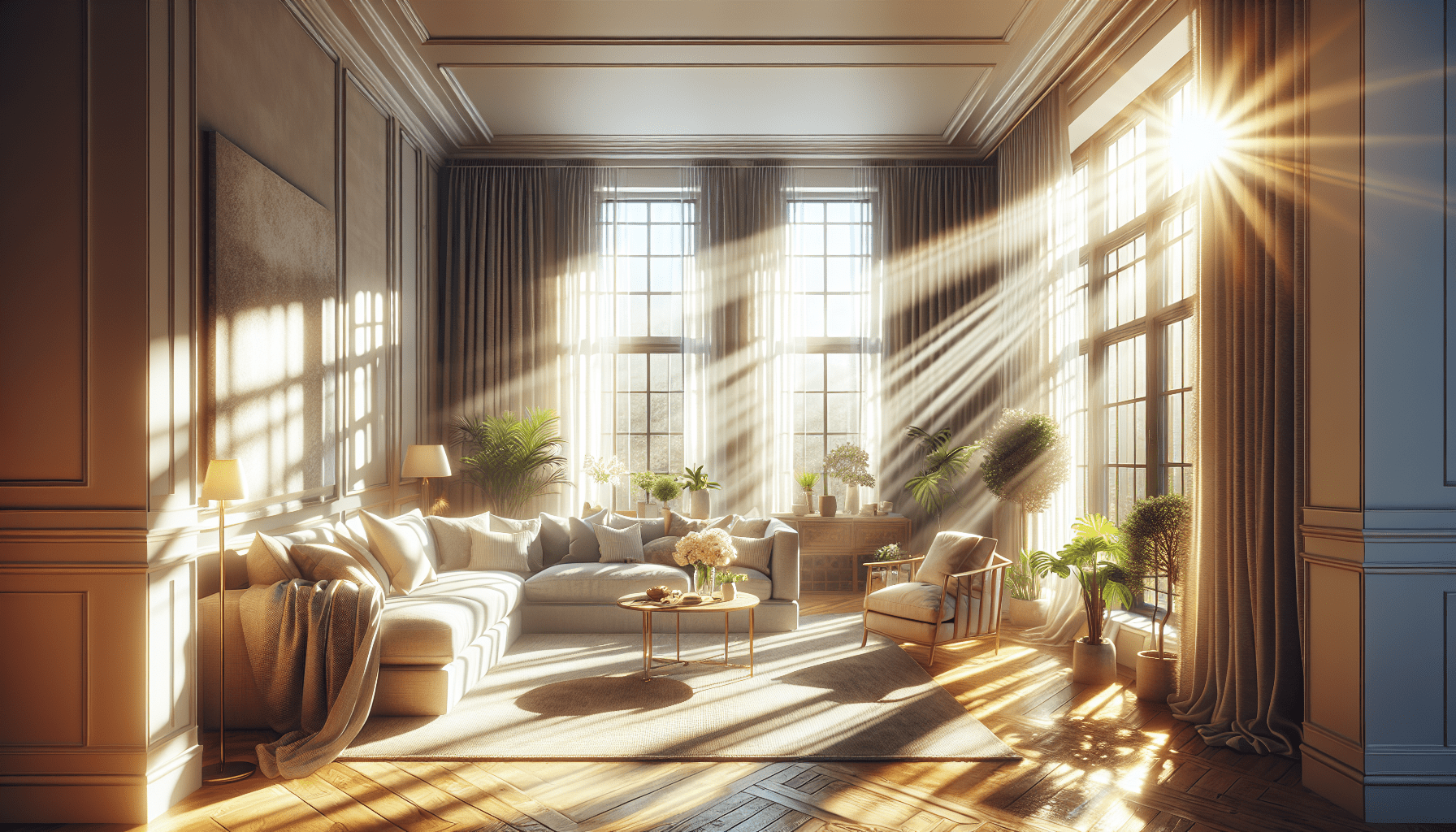Have you ever wondered how you can brighten up your living space without flipping a switch? When considering the comfort and functionality of your home, natural light plays a crucial role. Not only does it enhance the aesthetic appeal of your living area, but it also contributes to your well-being, especially if you suffer from allergies. Let’s explore some friendly advice on how you can maximize the natural light in your living space to enhance comfort and potentially alleviate allergy symptoms.
Understanding the Benefits of Natural Light
It’s more than just a bright room; natural light can significantly impact your physical and emotional health. From boosting your mood to improving your home’s energy efficiency, there are numerous advantages to inviting more sunlight indoors.
Boosting Your Mood and Health
Natural light is vital for your mental and physical health. Exposure to sunlight increases the production of serotonin, a hormone that can improve mood and help you feel calm and focused. Moreover, natural light can promote vitamin D production, which supports bone health, immune system function, and inflammation reduction.
Energy Efficiency and Sustainability
By embracing natural light, you can reduce your reliance on artificial lighting during the day. This not only decreases energy consumption but also lowers your electricity bills. In turn, this supports a more sustainable living environment.
Natural Light and Allergy Relief
For those dealing with allergies, a well-lit space can be a haven. Sunlight can help reduce moisture levels, minimizing the growth of mold and mites, which are common allergens. Additionally, sunlight has disinfecting properties that can help keep your space cleaner.
Assessing Your Current Living Space
Before you start enhancing natural light, it’s essential to evaluate your current living space. Determining where and how light enters can help you make informed decisions about adjustments.
Identifying Light Sources
Begin by identifying the primary sources of natural light in your living area. These typically include windows, glass doors, and skylights. Note the size, placement, and orientation of these features, as they significantly affect how much light enters your space.
Recognizing Obstacles
Consider any obstacles that might be obstructing sunlight. This can include overgrown trees or shrubs outside your windows, heavy curtains, furniture placement, or architectural features blocking light pathways.

Enhancing Window Efficiency
Windows play a crucial role in maximizing natural light. Improving their efficiency can dramatically transform the ambiance of your living area.
Choosing the Right Window Treatments
Opt for light-colored, sheer, or translucent window treatments that allow sunlight to penetrate while maintaining privacy. Whereas heavy drapes block light, contemporary fabrics offer a stylish alternative that enhances brightness without sacrificing comfort.
Cleaning Your Windows
Regularly cleaning your windows can drastically improve the amount of light that filters through. Over time, dirt, dust, and grime build up on glass surfaces, diminishing their transparency and limiting light entry. A simple cleaning routine can enhance clarity and illumination.
Considering Window Replacement or Addition
In some cases, replacing existing windows with more extensive options or adding new ones can make a significant difference. Consider windows with thin frames and larger glass areas to maximize light intake. You might also consider adding a skylight, especially if side windows are not feasible.
Interior Adjustments and Design for Optimal Lighting
The way your space is arranged and decorated has a profound impact on light distribution. Simple adjustments can make your home feel more open, airy, and full of natural light.
Furniture Arrangement
Position large furniture items away from windows and doors to ensure they don’t block sunlight. Instead, arrange them in a way that guides the light deeper into the room. Use reflective surfaces like mirrors and glass tables to bounce light around the space effectively.
Selecting Light Colors
Opt for lighter paint colors on walls and ceilings, as they reflect more light than dark hues. Pale shades of white, beige, or pastel can make a room feel more spacious and bright. Ensure your flooring and furnishings also echo this color scheme for maximum effect.
Utilizing Reflective Surfaces
Mirrors and other reflective surfaces can amplify natural light by bouncing it around a room. Strategically place mirrors opposite windows or in areas where they can reflect the scenery and light pathway. Reflective tiles, metals, and gloss finish paint can also contribute to this effect.

Strategic Use of Artificial Lighting
While natural light should be prioritized, strategic artificial lighting can complement and enhance it, ensuring your living area remains well-lit even on cloudy days.
Layered Lighting Approach
A layered lighting approach combines ambient, task, and accent lighting to create a cohesive lighting scheme. Ambient lighting provides general illumination, task lighting focuses on specific activities, and accent lighting highlights architectural features.
Dimming Options
Install dimmer switches to adjust your artificial lighting according to the time of day and amount of natural light available. This flexibility allows you to maintain a bright environment without overpowering natural light.
Incorporating Plants and Green Elements
Introducing plants into your living space not only improves air quality but also complements natural light. Plants naturally thrive in well-lit environments and can enhance the organic feel of your home.
Choosing the Right Plants
Select houseplants that are suited for the level of light in each area of your living space. Some plants prefer bright, indirect light, while others can thrive in lower-light conditions.
Placement for Maximum Impact
Place plants near windows where they can receive ample sunlight without obstructing the light. Utilize hanging planters or wall-mounted options if floor space is limited.
The Role of Outdoor Spaces
Your outdoor environment directly influences indoor natural light. Enhancing or altering these spaces can have a positive impact on light influx.
Managing Exterior Greenery
Trim back trees or shrubs that might be casting shadows or blocking windows. This not only increases available light but also maintains your home’s curb appeal.
Using Outdoor Mirrors
Position mirrors in your garden or on your patio to reflect sunlight into your living area. This can be an innovative way to bring more light indoors while adding a unique aesthetic element to your outdoor space.
Maintenance Tips for Sustained Natural Light
Ensuring your living area remains bright over time involves consistent upkeep and maintenance. Here are some long-term strategies to sustain your efforts.
Routine Cleaning and Upkeep
Regularly clean windows, mirrors, and light fixtures to maintain their reflective qualities. Dust and dirt can accumulate quickly, reducing the effectiveness of these surfaces in reflecting light.
Seasonal Adjustments
With changing seasons, the angle and intensity of sunlight will vary. Adjust your windows treatments and furniture placement in response to these changes to maximize light intake year-round.
Conclusion
Embracing natural light within your living area is an achievable and beneficial task that enhances both your home and well-being. By understanding the dynamics of light and implementing these strategies, you can create a space that feels open, welcoming, and healthy. You’ll not only enjoy a brighter home but also potentially experience relief from allergens, leading to a more comfortable and pleasant lifestyle. Take one step at a time, knowing that even small changes can have a big impact on the atmosphere and health of your living space.
